Specifically, the first patient was a boy named VT (28 months old, Tuyen Quang ). On the night of July 25, the child was sleeping on the floor with his family when he was bitten by a snake on the big toe of his left foot.
After being bitten, the child was in pain and crying, the family discovered a snake under the bed nearby and beat it to death. Knowing that it was a poisonous snake, the family took the child to a traditional healer's house to get medicine to apply. After 1 day of applying the medicine, the child's foot appeared swollen, necrosis spread to the thigh, and the whole body convulsed, only then did the family panic and take the child to the emergency room.
About 36 hours after being bitten by a snake, the patient was admitted to the National Children's Hospital in a state of respiratory failure, circulatory failure, coma, convulsions, widespread necrosis in the left foot, and compartment syndrome, rhabdomyolysis... with a very serious prognosis.
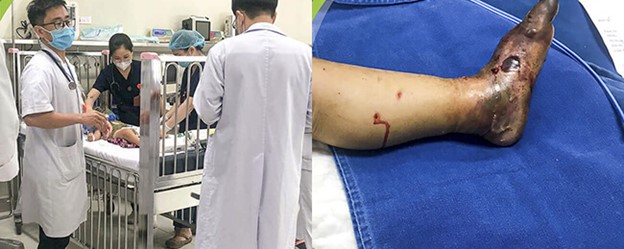
The condition of the child bitten by a cobra when admitted to the hospital. (Photo provided by the hospital).
Based on the characteristics of the bite, the nature of the swelling, progressive necrosis, and respiratory muscle paralysis, the doctors directed the child to be bitten by a cobra. That same night, the child was given 40 vials of cobra antivenom serum and a ventilator, circulatory support, and at the same time, surgery was performed to open the fascia of the left foot to relieve compartment compression. In addition, the child was also given intravenous fluids and diuretics to prevent complications of acute renal failure due to rhabdomyolysis.
The second case is a child named NH (3 years old, Nghe An ) who was bitten by a black and white striped snake on his right arm while sleeping on the floor on July 25. The family immediately took the child to a local herbalist for treatment.
However, within 1 hour of applying the tobacco, the family noticed that the child had drooping eyelids, dilated pupils on both sides, difficulty speaking, quadriplegia, and progressive respiratory muscle paralysis. The child was quickly taken to the local hospital for emergency treatment, intubated, and transferred to the National Children's Hospital.
Through the image of the snake provided by the family, the doctors determined that the child was bitten by a northern krait. This is one of the most venomous snakes, often causing dilated pupils, progressive muscle paralysis spreading to the limbs, especially causing respiratory muscle paralysis, directly threatening the victim's life.

The patient gradually stabilized after treatment. (Photo provided by the hospital).
Meanwhile, anti-krait venom serum is not currently produced in Vietnam. Domestic supply depends on foreign sources and is often scarce, lacking, or non-existent.
Dr. Tran Thi My Hanh, Department of Internal Medicine Intensive Care, National Children's Hospital, said that doctors have made great efforts to contact domestic and foreign hospitals to find a source of antivenom serum for the Northern krait.
At Cho Ray Hospital ( Ho Chi Minh City), there is only monovalent antivenom serum for the Southern krait (used to neutralize the venom of a single species of Southern krait without cross-reactivity with Northern krait) and polyvalent antivenom serum (effective for common kraits, king cobras, and cobras). With the consensus of the expertise of doctors from the North and South, and the trust and determination of the family, the child patient was transfused with 10 vials of polyvalent antivenom serum.
At noon on August 1, doctors from the Emergency and Poison Control Department also received a boy named QH (13 years old, Thai Nguyen) who was bitten by a green snake while he was working. After discovering the incident, the family took the child to the local hospital for first aid and then transferred him to the National Children's Hospital.
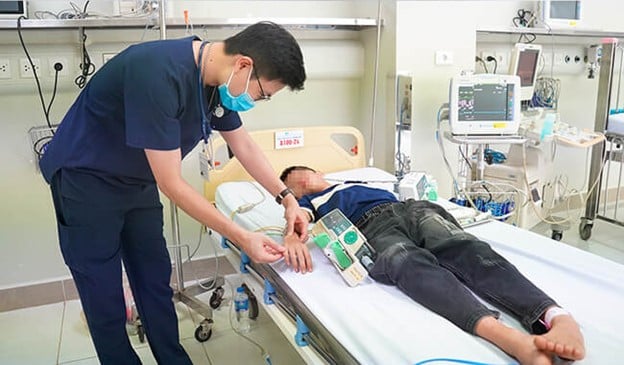
Baby boy QH is receiving intensive treatment at the Emergency and Poison Control Department. (Photo provided by the hospital).
Here, the child was found to have a severe blood clotting disorder and hypoalbuminemia. Immediately, the child was transfused with 10 vials of antivenom serum for bamboo viper, fresh plasma and intensive care. After only 1 day of treatment, the child's condition stabilized and he was discharged from the hospital.
In Vietnam, common venomous snakes include: cobras, banded kraits, banded kraits, vipers, etc. Each species of snake has different morphological characteristics and types of venom.
According to Dr. Pham Thi Thanh Tam, Central Children's Hospital, summer is the season when snakes breed and develop, occurring most from April to November and is also the time when the number of children bitten by snakes tends to increase, especially in localities near rivers and mountains. Patients are often bitten by snakes while sleeping on the floor, living near fields or places with poultry...
Doctor Pham Thi Thanh Tam said that many patient families subjectively apply folk experience to provide first aid for snake bites, until symptoms of respiratory failure, cyanosis, severe bleeding appear, then they rush to medical facilities.
Doctors recommend that after being bitten by a snake, patients need to be treated and given emergency treatment promptly to limit limb necrosis, blood clotting disorders, infection, and even death.
Le Trang
Source



![[Photo] Panorama of the Opening Ceremony of the National Press Festival 2025](https://vphoto.vietnam.vn/thumb/1200x675/vietnam/resource/IMAGE/2025/6/20/6b835ee92c2c4df587af73cb2d1f4f5f)




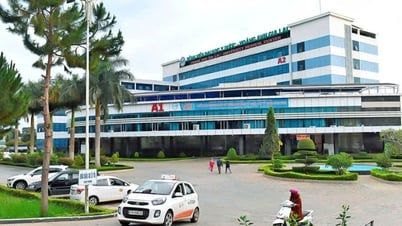

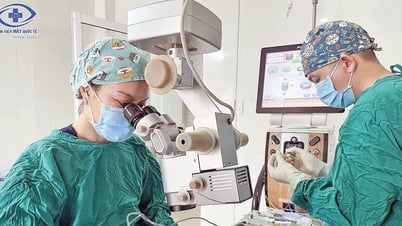


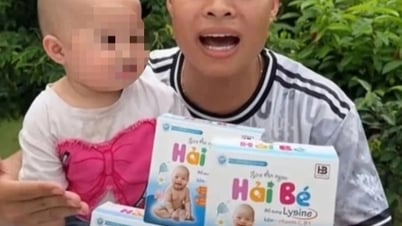



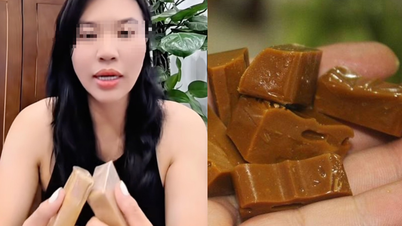




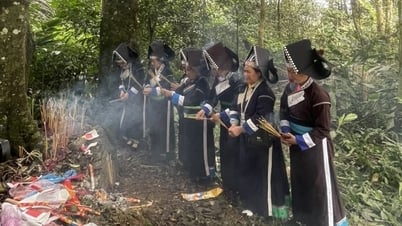

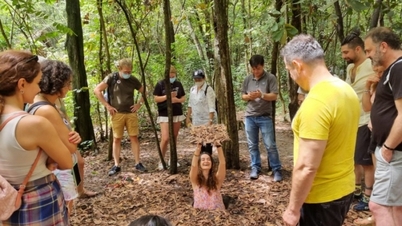

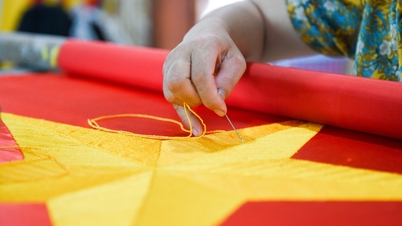

![[Photo] General Secretary To Lam chairs the 14th Central Military Commission Conference](https://vphoto.vietnam.vn/thumb/1200x675/vietnam/resource/IMAGE/2025/6/20/a9d25fc6dd664fb9a3757502f32e5db0)


























![[Maritime News] Wan Hai Lines invests $150 million to buy 48,000 containers](https://vphoto.vietnam.vn/thumb/402x226/vietnam/resource/IMAGE/2025/6/20/c945a62aff624b4bb5c25e67e9bcc1cb)












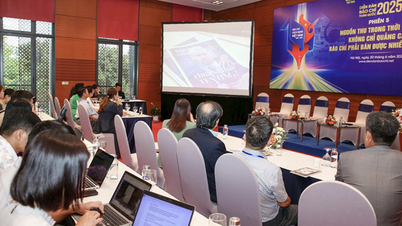


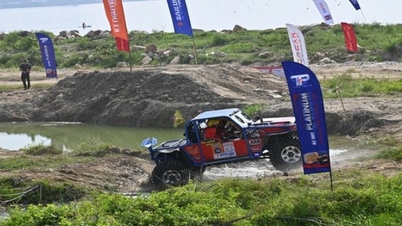

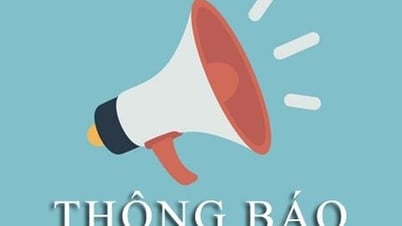


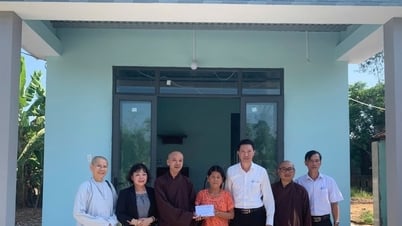

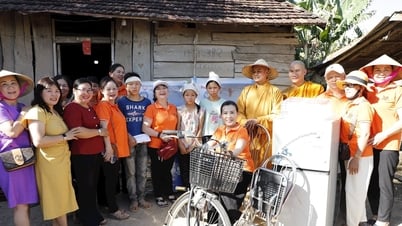




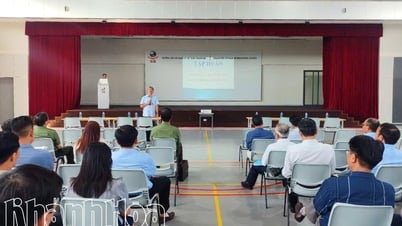

















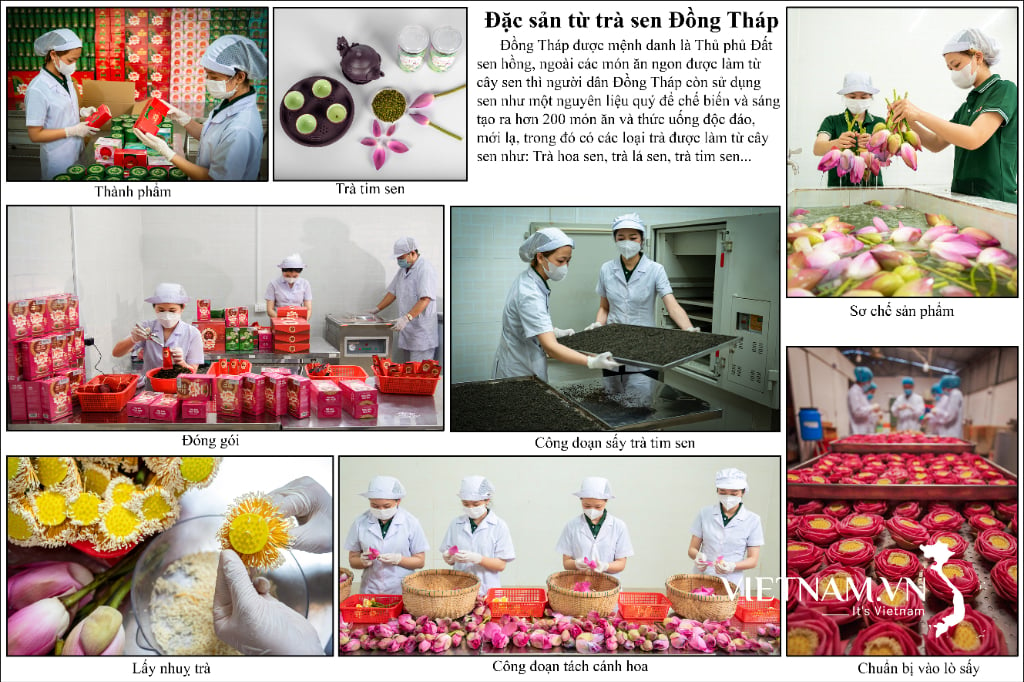
Comment (0)